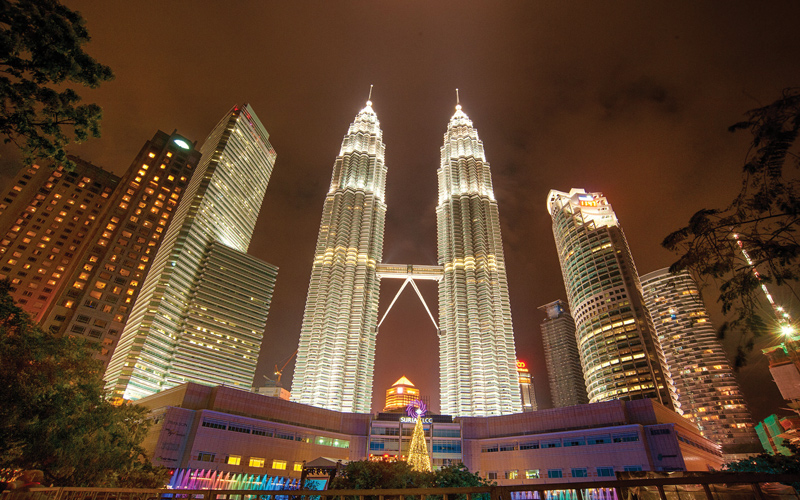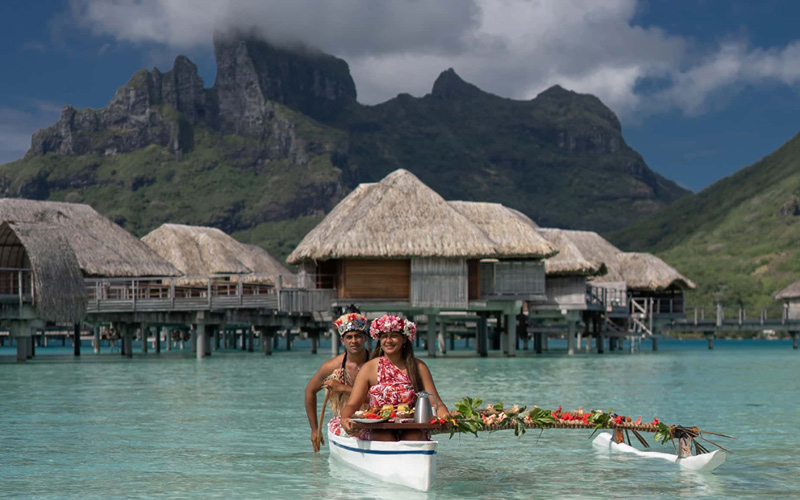Exploring Malaysia’s Architectural Treasures
When presenting your clients with reasons to visit the Southeast Asian country of Malaysia,

architecture might not have been top of mind. However, Malaysia’s history is a melting pot of cultures from both the East and the West and this influence is seen in the diverse architecture.
With early settlements dating back 40,000 years, Malaysia has a rich history peppered with immigrants and settlers. Trade routes between the native Malay tribes, China, and India dating back to the first century CE show thriving commerce – this migration also brought Buddhism and Hinduism to the peninsula. After local kings like Langkaasuka and Srivijaya established empires, the Malacca Sultanate took over most of modern Malaysia in the 15th century, bringing Islam to the region.
Malaysia was colonized by the Portuguese, Dutch, and British in the 16th and 17th centuries, leading to a few centuries of colonial rule. Many wars were fought in the Malay coast and nearby islands during this time. Conflicts and tensions between the different migrants and ethnic groups in the peninsula grew after World War II, which led to the independence of the Federation of Malaya in 1957, and the final proclamation of Malaysia as a sovereign country in 1963.
The following are some examples of the architectural designs that were influenced by this rich history.
Petronas Twin Towers
A symbol of modern urbanization in Kuala Lumpur, the Petronas Twin Towers stand as the most recognizable landmark in Malaysia. These 88-story towers hold the title for 12th tallest skyscrapers in the world. The architectural design that is evident on the Petronas Twin Towers is largely inspired by Islamic principles which are unity, harmony, stability, and rationality. Each building is supported by 16 large columns around its perimeter. These columns, as well as the rest of the structure, are constructed of high-strength concrete rather than structural steel, and the roof and walls are made of stainless steel and glass.
Sultan Abdul Samad Building
Also located in Kuala Lumpur, this building is another of the city’s most iconic landmarks. The Sultan Abdul Samad Building, located in the center of Jalan Raja, was designed by architect A. C Norman. With its breathtaking architecture, the Sultan Abdul Samad Building is world-famous. Constructed of bricks, it combines Western, Gothic and Moorish architectural features. Built in 1897, the building was named after the Sultan of Selangor at the time. Gazing upon its mesmerizing architecture, visitors will be enchanted by the grand porch, the huge arches, the clock tower, the curved colonnades, and the exquisite copper cupolas. There’s a reason why it serves as a backdrop for Malaysia’s Independence Day parades every year.
A’Famosa Fortress
Built by the Portuguese in the early 16th century, this fort in Melaka is the oldest of European architectural remains in Southeast Asia. Also known as Porta de Santiago, this structure is one of the four main gates of the famous Portuguese fortress. Fortified with walls three meters thick and a watchtower 40 meters high, the A’Famosa played a key role in protecting the Portuguese from their enemies. A Famosa is located in Malacca, Malaysia.
Crystal Mosque
Located in Terengganu, Crystal Mosque holds a unique place of pride among the most remarkable mosques in the world. As the name suggests, the glass exteriors that reflect the sea give off a sparkling crystal-like illusion, also making it seem as if the mosque is floating. To fully appreciate the effect of its crystalline exterior, it is best to visit at night, when the mosque is fully lit. The structure of the Crystal Mosque is reinforced with steel, which, joined with the glass and crystal, gives it a sleek-modern look that’s not often associated with mosques.
Lexis Hibiscus Resort
You might not expect a resort hotel to appear on a list of top landmarks in Malaysia, but the Lexis Hibiscus certainly stands out as one of the country’s most unique structures. Located just 45 minutes away from Kuala Lumpur International Airport this fascinating resort complex attracts people from around the world to enjoy its pools. Its pool villas are shaped like hibiscus flowers, Malaysia’s national flower. Lexis Hibiscus also holds the Guinness World Record for the most swimming pools, making it one of the world’s most unique hotels.
For more information visit Tourism Malaysia’s website: www.malaysia.travel




